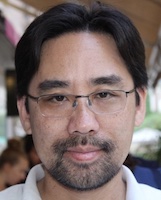

So Hirata

Born April 15, 1971 in Funabashi, Japan
Marvin T. Schmidt Professor and Blue Waters Professor, Department of Chemistry, University of Illinois at Urbana-Champaign
Email:sohirata@illinois.edu
WWW: external link
Japan Society for the Promotion of Science Fellowship for Young Scientist (1996); Hewlett-Packard Outstanding Junior Faculty Award (2008); Medal of the International Academy of Quantum Molecular Science (2008); National Science Foundation CAREER Award (2009); Camille Dreyfus Teacher-Scholar Award (2009); Moskowitz Memorial Lecturer, University of Minnesota (2011); Scialog Fellow, Research Corporation for Science Advancement (2011); Scialog Collaborative Innovation Award, Research Corporation for Science Advancement (2012); Fellow, American Association for the Advancement of Science (2012); Visiting Professor, Nicolaus Copernicus University (2013); Per-Olov Löwdin Lecturer, Uppsala University (2014); Fellow, Royal Society of Chemistry (2015); School of Chemical Sciences Teaching Award, University of Illinois (2017); Robert S. Mulliken Lecturer, University of Georgia (2018).
Author of:
Important Contributions:
- Advanced ab initio crystal orbital theory and embedded-fragmentation methods for crystalline and amorphous solids and liquids.
- Developed orbital-dependent density-functional theory based on optimized effective potential for ground and excited states.
- Championed the use of symbolic algebra for automated formula derivation and parallel-execution code synthesis of high-rank electron-correlation methods.
- Developed diagrammatic vibrational many-body methods for molecules and solids, introducing the concept of Dyson geometry and coordinates.
- Reported theorems, proof, and conjecture concerning size consistency and the existence of thermodynamic limit.
- Proposed a new finite-temperature many-body perturbation theory, elucidating the cause of its low-temperature breakdown.
- Derived algebraic recursions for one-particle Green's unction and proved its linked-diagram and irreducible-diagram theorems within a time-independent framework.
- Introduced stochastic algorithms for explicitly correlated many-body perturbation and Green's function theories and grid-based diffusion Monte Carlo.